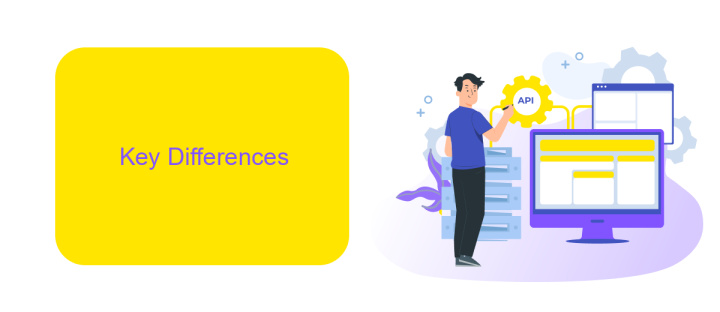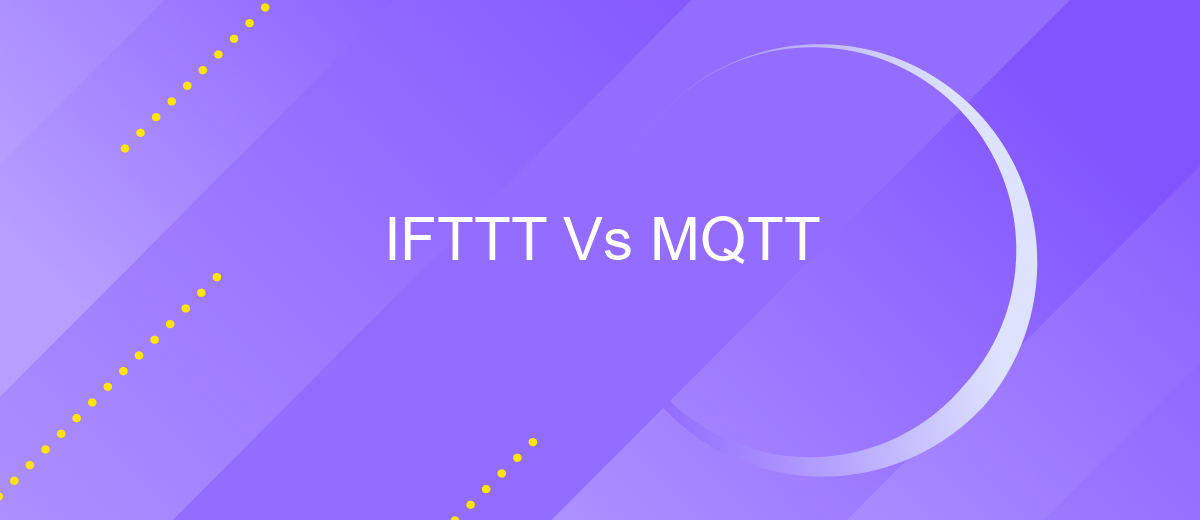IFTTT Vs MQTT
In the rapidly evolving world of the Internet of Things (IoT), choosing the right communication protocol is crucial. IFTTT (If This Then That) and MQTT (Message Queuing Telemetry Transport) are two popular options, each with its unique strengths and use cases. This article delves into the key differences between IFTTT and MQTT to help you determine which is best suited for your IoT needs.
Introduction
The rapid advancement of technology has led to the proliferation of tools and platforms designed to streamline and automate various tasks. Among these, IFTTT (If This Then That) and MQTT (Message Queuing Telemetry Transport) have emerged as popular solutions for connecting devices and services. While both serve the purpose of automation and integration, they operate in fundamentally different ways and are suited to different types of applications.
- IFTTT is a web-based service that allows users to create simple conditional statements, called applets, to automate tasks between different services and devices.
- MQTT is a lightweight messaging protocol designed for small sensors and mobile devices, optimized for high-latency or unreliable networks.
- ApiX-Drive is another service that facilitates the integration of various applications and services, offering a user-friendly interface for setting up complex workflows without requiring extensive technical knowledge.
Understanding the differences between IFTTT and MQTT is crucial for selecting the right tool for your specific needs. Whether you are looking to automate simple web-based tasks or require a robust messaging protocol for IoT devices, knowing the strengths and limitations of each can help you make an informed decision. Additionally, services like ApiX-Drive can further simplify the integration process, providing a versatile solution for a wide range of automation requirements.
Key Differences

IFTTT (If This Then That) and MQTT (Message Queuing Telemetry Transport) serve different purposes in the realm of automation and communication. IFTTT is a web-based service that allows users to create chains of simple conditional statements, called applets, to automate tasks between different web services and devices. It is user-friendly, requires no programming skills, and is ideal for personal and small-scale automation needs. On the other hand, MQTT is a lightweight messaging protocol designed for efficient communication between devices in low-bandwidth, high-latency, or unreliable networks, making it suitable for IoT applications. MQTT requires more technical knowledge to implement and is typically used in industrial and large-scale IoT deployments.
Another key difference is in how integrations are managed. IFTTT provides a straightforward interface for connecting various services without the need for deep technical expertise. ApiX-Drive, a service that helps streamline integrations, can further simplify this process by offering pre-built connectors and an intuitive dashboard. Conversely, MQTT requires a more hands-on approach, involving setting up brokers and managing topics and subscriptions manually. This makes MQTT more flexible and powerful for custom IoT solutions but also more complex to set up and maintain compared to IFTTT.
Use Cases and Benefits

When comparing IFTTT and MQTT, understanding their use cases and benefits is crucial for making an informed decision. IFTTT (If This Then That) is a versatile platform designed for connecting different web services and devices, making it ideal for automating simple tasks without the need for deep technical knowledge. MQTT (Message Queuing Telemetry Transport), on the other hand, is a lightweight messaging protocol optimized for IoT (Internet of Things) applications, offering real-time communication and low bandwidth consumption.
- IFTTT Use Cases: Home automation, social media management, and simple task automation.
- MQTT Use Cases: Real-time IoT applications, remote monitoring, and device-to-device communication.
- Benefits of IFTTT: User-friendly interface, extensive integration options, and no coding required.
- Benefits of MQTT: Low latency, efficient bandwidth usage, and robust real-time communication.
For those looking to streamline integrations between various services, platforms like ApiX-Drive can be invaluable. ApiX-Drive allows users to automate workflows and connect multiple applications seamlessly, complementing the capabilities of both IFTTT and MQTT. Whether you're a beginner seeking simplicity or a developer needing advanced IoT solutions, understanding these tools' strengths can help you choose the right one for your needs.
Technical Considerations

When evaluating IFTTT and MQTT, technical considerations play a crucial role in determining the best fit for your needs. IFTTT is a user-friendly platform designed for simple automation tasks, while MQTT is a lightweight messaging protocol ideal for real-time communication in IoT systems.
IFTTT excels in ease of use, offering a wide range of pre-built integrations with popular services. It is perfect for users who need to set up basic automation without delving into complex configurations. On the other hand, MQTT provides more granular control and is highly efficient in environments where low latency and minimal bandwidth usage are critical.
- Ease of Use: IFTTT offers a more intuitive interface compared to MQTT.
- Scalability: MQTT is better suited for large-scale IoT deployments.
- Real-Time Communication: MQTT excels in scenarios requiring instant data transmission.
- Integration Support: IFTTT has extensive pre-built integrations, while MQTT may require custom setups.
For those looking to bridge the gap between IFTTT's simplicity and MQTT's robustness, services like ApiX-Drive can be invaluable. ApiX-Drive facilitates seamless integration between various platforms, allowing users to leverage the strengths of both IFTTT and MQTT without compromising on functionality.
Conclusion
In conclusion, both IFTTT and MQTT offer unique advantages for different integration needs. IFTTT excels in its user-friendly interface and wide range of pre-built applets, making it an excellent choice for users looking to quickly set up simple automation tasks without requiring technical expertise. On the other hand, MQTT is a robust protocol designed for more complex, real-time communication between devices, ideal for IoT applications where efficiency and reliability are paramount.
Choosing between IFTTT and MQTT ultimately depends on your specific requirements and technical capabilities. For those who need a more advanced solution with extensive customization options, services like ApiX-Drive can bridge the gap by offering powerful integration tools that combine the simplicity of IFTTT with the robustness of MQTT. ApiX-Drive allows users to create tailored workflows and automate processes efficiently, providing a versatile platform for both novice and advanced users. Therefore, evaluating your needs and considering the capabilities of these tools will help you make an informed decision.
FAQ
What is the main difference between IFTTT and MQTT?
Can I use IFTTT and MQTT together?
Which is better for home automation, IFTTT or MQTT?
Do I need programming skills to use IFTTT or MQTT?
What are some alternatives to IFTTT and MQTT for automation and integration?
Time is the most valuable resource for business today. Almost half of it is wasted on routine tasks. Your employees are constantly forced to perform monotonous tasks that are difficult to classify as important and specialized. You can leave everything as it is by hiring additional employees, or you can automate most of the business processes using the ApiX-Drive online connector to get rid of unnecessary time and money expenses once and for all. The choice is yours!

